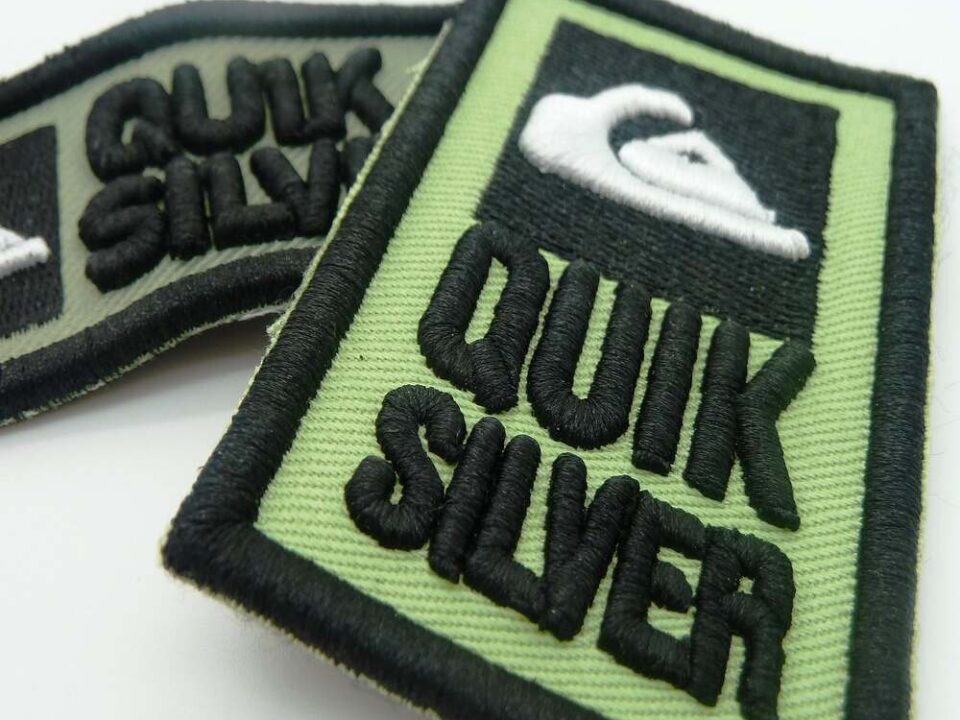8 Tips for choosing the right patch colors

7 quick tips for removing iron on patches safely
July 9, 2024
Finding The Right College Iron-On Patches -9 Factors To Consider
August 19, 2024Patches are everywhere, from military insignias to corporate logos to sports team emblems. And now they have become a trendy new way to personalize clothing and accessories, allowing individuals to express their unique style and interests.
However, in order for them to be impactful and memorable, they must contain the right colors. Every patch color conveys a different meaning or emotion, adding depth and significance to the design. If you need help selecting the perfect colors for your patches, this blog is for you. Grab a coffee as we explore some great tips to help you pick the ideal hues for your next patch.
Patch Color Selection Tips
While designing a patch, pay close attention to the colors you choose. Here are some important aspects to keep in mind.
1. Identify the Purpose and Intended Audience
Before diving into color selection, it is essential to understand the purpose of the patch and the audience it is intended for. A patch made for a young sports team will look very different than one made for a corporate event. Patches for children’s activities may contain vibrant, lively colors, while corporate patches may demand more muted, professional colors. Knowing your audience ensures the colors you choose have the desired effect and resonate properly with them.
2. Leverage Color Psychology
Colors can affect behavior and perception, so understand the meaning behind each one before choosing patch colors. In fact, there’s a whole science behind this, known as color psychology. Different hues can evoke different emotions and associations.
For instance, red is typically linked to passion and urgency, yellow with happiness and vitality, green with growth and tranquility, and blue with trust and calm. When creating a patch, think about the feeling you want to evoke and make color selections accordingly. So blue could be a good color for a medical team patch, symbolizing dependability and trustworthiness. On the other hand, green might be a suitable hue for an environmental group, helping to signify progress and nature.

Source: Freepik
3. Consider Color Contrast
In order to make your patch aesthetically pleasing and understandable, make sure to pay attention to contrast. Maintaining a high contrast between the background and foreground components can help make the design of your patch stand out and be more visible. For example, it is easier to see text when it is white on a dark background or dark on a light background.
Furthermore, if your patch has more than one element, make sure every component has enough contrast to ensure they stand out. For instance, light-coloured text or images will stand out more against a dark border, increasing the overall impact of the design.
4. Use a Limited Patch Color Palette
While you might be tempted to use a wide range of colors, limiting your color palette can lead to a more solid and visually appealing design. A patch with too many colors may appear cluttered and disorienting, whereas a selected color scheme offers a clear and concise design. Additionally, paying attention to patch color coordination helps create a cohesive and visually appealing design.
Three to five colors work well for most patches, ensuring the design remains striking without being overwhelming. Besides providing a clean design, limiting the colors also helps maintain brand consistency and reduces production costs, as fewer colors are easier to replicate accurately and consistently, ensuring a professional and polished final product.
5. Test on Different Backgrounds
Patches are typically applied to various materials and colors. A patch that looks great on a white background might not stand out on a dark or patterned surface. Therefore, it’s important to test how well your patch colors will show up against different backgrounds.
By testing patches on different backgrounds, you identify potential issues with color contrast and visibility before placing an order. By tweaking the colors, you can ensure your patch remains vibrant and effective regardless of where it is placed.

Source: Freepik
6. Use Color Gradients Sparingly
Color gradients can add dimension and depth to your patch design, making it more visually interesting. However, they should be used sparingly to avoid overcomplicating the design. Gradients work best to highlight specific elements or create a sense of depth without overwhelming the overall design.
Ensure that the gradients are subtle and complement the other colors in the palette. When used correctly, gradients can enhance the visual appeal of your patch without detracting from its primary elements. Thoughtful application of gradients ensures that your patch remains eye-catching and professional, improving its overall aesthetic.
7. Ensure Accurate Duplication
When designing patches, it’s crucial to consider how the colors will be reproduced in the final product. Different materials and manufacturing processes can affect color reproduction. So make sure to understand the limitations and capabilities of the production methods used by your patch manufacturer
Knowing how to match patch colors effectively can make a huge difference in the overall appeal and impact of your design. Provide Pantone color codes or specific color samples to achieve the closest possible match to your original design. This helps maintain the integrity of your design and makes sure that the final outcome meets your expectations.
8. Align with Brand Identity
Businesses, sports teams, and other organizations must ensure their patches align with their brand identity. This means using colors that are part of the brand’s color palette. Consistency in color usage helps brand recognition and reinforces their image.
For example, if a company’s logo is predominantly blue and white, the patches should incorporate these colors to maintain brand consistency. This alignment strengthens the brand’s visual identity and ensures the patches are instantly recognizable.
Over to You
Choosing the right patch color is a critical aspect of the patch design process. It can significantly impact their effectiveness and appeal. By following the tips mentioned above, you can create visually striking and impactful patches. Thoughtful color selection not only boosts the aesthetic appeal of your patches but also ensures that they effectively convey the intended message and resonate with the target audience.
If you are looking for a patch with the right colors, Anything Chenille can help. As a professional patch manufacturer, we have years of experience creating custom patches. We can help create a unique design with a color palette that aligns with your needs and preferences. To learn more about our services, contact our company representatives today.




